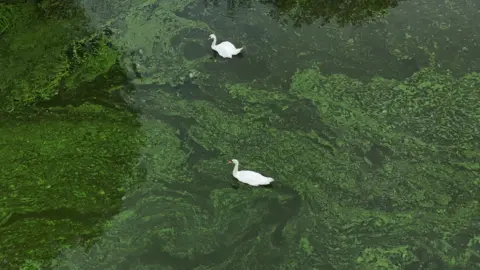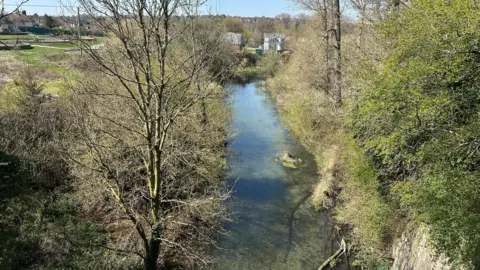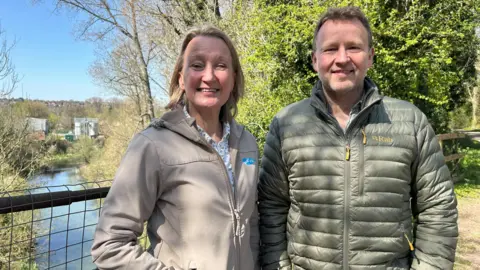Dry weather sewage spills 'damaging wildlife'
 PA Media
PA MediaRiver campaigners say sewage spills into the River Kennet at Marlborough are damaging wildlife and putting swimmers' lives at risk.
Charlotte Hitchmough, of Action for the River Kennet, says water companies are not following rules allowing limited discharges of sewage only during periods of heavy rainfall.
She says sewage is discharged during dry weather from places like Marlborough's sewage works: "No-one can remember the last time it rained so there are some really big questions about why it's discharging."
Thames Water said it continued plans to "lower the number of storm discharges and implement nutrient reduction schemes including at our sites in Marlborough, Ramsbury and Hungerford."
Sewage can increase nutrients in the water, resulting in imbalances leading to algae blooms, which eventually denies other wildlife, such as fish, oxygen.

Ms Hitchmough, chief executive of the group, said: "We've just had the driest March on record.
"Over the last full year, this particular sewage treatment works was discharging for 2,786 hours… which is a lot."
She says this amount has affected local wildlife and "kills the river from the bottom up".

Residents have also become sick after swimming in a popular hotspot downstream from the sewage works, says another campaigner, James Wallace, chief executive of River Action.
"A number of children have been violently sick straight after swimming," he said.
"They've eaten different food, the only possible source would have been swimming in the river and the only possible source of the pollution could have been from the sewage treatment works."
'Life-threatening sepsis'
He added: "An older gentleman in his 80s scratched his foot whilst in the river a few years ago and he developed very serious, life-threatening sepsis and was hospitalised, so there's a possibility that at some point someone could actually die. It's a real risk."
Thames Water added: "We know how much people enjoy and appreciate rivers, which is why over the next five years we will deliver a record amount of investment to address our ageing infrastructure.
"We are committed to seeing waterways thrive, but we can't do it alone. Farming, industry, road runoff, wildlife and increasingly extreme weather also play a role in river health.
"While all storm discharges are unacceptable, the sewage system was historically designed to prevent sewage backing up into people's homes. Transparency is at the heart of what we do, and we were the first water company to publish a real time data map on our website, before it became legal requirement to do so."
